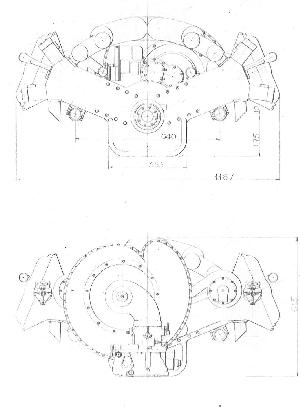 NEWS
NEWS  100P Airplane
100P Airplane  Bugatti
Bugatti  de Monge
de Monge  Organisation
Organisation  Pegasus Newsletter
Pegasus Newsletter Contact
Contact  Links
Links Main
Main 


 NEWS
NEWS  100P Airplane
100P Airplane  Bugatti
Bugatti  de Monge
de Monge  Organisation
Organisation  Pegasus Newsletter
Pegasus Newsletter Contact
Contact  Links
Links Main
Main 

None of the aircraft engines were really successfull, only a few were built, and even less were really installed in airplanes and actually flew.
However it can not be said that these constructions were of no importance. The first eight cylinder engine was the aircraft engine of 1915, and it is only logical that many of Bugatti's automobile engines inherited features from the aviation designs. This was also the first engine to feature the characteristic square-cut style famous for all Bugattis from type 30 onwards.
In 1915, while working for the French government, Ettore designed a 250HP straight-eight, as shown above. This was basically very similar to two enlarged Garros engines put in line. The propellor was not fixed to the crankshaft, but to a shaft somewhat shifted to the above/right side, which was driven through reduction gear, at a ratio of 32 to 47. The rear propellor shaft bearing was mounted on the side of the crankcase and not forward in the usual manner, which kept overall length to a minimum.
The eight cylinder Bugatti engine was a vertical water-cooled type of 110mm bore and 160mm stroke, making a displacement of 12 liters. Compression ratio was 5 to 1, and the engine developed 210HP at 1880rpm, and 250HP at 2160. Cylinders were from cast iron, in blocks of four. The single overhead camshaft was made in two sections and driven from the centre of the crankshaft by bevel gears. Two inlet and one exhaust valve were operated by separate rocker arms. The exhaust valve stems were made hollow for the purpose of cooling by air circulation. The crankshaft was built up from two conventional four-cylinder shafts that were coupled together at right angles by a tapered joint at the center main bearing. (See the drawing of the King-Bugatti engine). Nine plain main bearings were used. The connecting rods had shanks of H section, and the aluminium pistons were fitted with 5 rings. The cooling water was circulated by a centrifugal pump, and dual ignition was provided by two H-L-8 Bosch magnetos. The dry weight was said to be 220kg (485lb).
To my knowledge no aircraft were ever equipped with the Bugatti 8-cylinder engine.
The engine may not have been fully developed, but the license was sold to Diatto in Italy and Delaunay-Belleville in France and some 8-cylinder models were also brought by Friderich to the USA. Peugeot was ordered to produce the U16 engine in France, only a few were really completed.

Bugatti kept improving his engine, and towards the end of the war designed a version with increased stroke of 180mm.
The French were not really interested in the U16, but the Americans were, leading to a contract to build engines in the USA, these are the famous King-Bugattis. In France the development of the engine was taken up by Breguet after the war.
Reportedly the engine was used in a Morane Saulnier, without any success. Some of the later Breguet developments were used by Breguet in some airplanes, without much succes though.
This 125x180mm engine of 34 litres was designed, though never built. The general layout is very similar to the WWI U-16 engine. The design is interesting in that the crankshaft is suspended from the cylinder block, as used later on the Royale (T41), T50 and others. The main bearings also seem to be water cooled, as on the Royale. Also it appears that the crankshaft has proper pressure lubrication, Like in the King-Bugatti!
The level of detail of the drawing indicates that the design was at a state when all major design work had already been completed. It is most probable that this drawing was sent to prospective customers. The lay-out of the engine, with the very wide angle-V of approx. 135 degrees, is not fit for fighter aircraft. Probable use might have been flying-boats, cargo or maybe even bomber airplanes. Several questions remain, for example if deMonge´s team that was working on the Bugatti Airplane had anything to do with the design, or if the engine was designed at the Bugatti Paris office, or maybe even in Molsheim?.
Though no detail drawings are available, some info may be taken from the drawing. Obviously each bank had twin-overhead cams. Unknown is if there are 2 or 4 valves per cylinder. Considering the large size of the engine it may well be 4 (Von Saldern in his book writes it are 4 valves per cylinder, though he mistakes the no. of cylinders at 8). The carburettor is fitted under the centrifugal compressor, which feeds both banks through a complex inlet manifold. Two waterpumps are fitted at the rear of the engine. The exhausts are at the underside of each bank.
The engine dimensions are 108mm bore and 120mm stroke
which amounts to 17,591ccs total engine capacity.
The four camshafts, two water pumps, oil
pumps and a single large centrifugal blower were driven
from a cascade of gears at the rear of the engine.
The inlet manifolding is between the two banks forming the
‘V’ and exhaust stubs point vertically downwards just
outboard of a pair of tubular engine bearers.
Some other features shown on the individual Type 67
component drawings include the following:
No further information available.
Another one is the degree of involvement of Ettore Bugatti in the later development of the Breguet engines. To Borgeson it seems impossible that he was not somehow involved in this, moreover because the Breguet H32 is like the culmination of the Bugatti idea, who himself began by making a two-cylinder at Prinetti and Stucchi by combining two single-cylinder engines. Than the T14 which was a kind of "straight eight" with two T13 engines mounted in one chassis, and finally the U16 aeroengines of 1916 and 1925, and of the T45 and T47 Automobiles, combining two straight-eights to make a 16-cylinder engine!
It may seem that all this designing of aeroengines was of no use, however the money Bugatti will have made by selling the Licenses, especially the $100.000 for the license to the Americans, helped him in getting started again in Automobile Manufacturing after WWI. The development of these engines added much to the engine design for his cars, the 8-cylinder aero-engine being the first straight eight, even showing some of the straight - cut features typical for all of the later engine-designs. The T34 was very much like a double-Royale engine, especially in the way the main bearings were suspended from the cylinder-blocks, and not part of the crank-case!
A King-Bugatti engine can be seen at the National Air Museum of the Smithsonian Institution in Washington D.C., and one in the USAF museum at the Wright-Patterson AF Base at Fairborn, Ohio.
The U-Sixteen of 1916
The U-sixteen was developed right after the 8-cylinder, putting two of these blocks vertically on the same crankcase. Displacement thus was 24 litres, output was 400HP at 2100rpm, dry weight some 1000lb (450kg). The two 8-cylinder engines were directly coupled through the reduction gear, at a ratio of 2 to 3. The propellor shaft lay inbetween the two cylinder-banks. The important part was that in this way the propellor shaft could be used to shoot a gun through! At the beginning of WWI the French had a hard time against the German Fokkers, because the Dutch pioneer/inventor had invented a synchroniser mechanism, ensuring that a machine-gun above the engine could fire through the proplellor only when no propellor-blade was in the way. The French used the more primitive deflector system by Roland Garros, consisting of some metal plates attached to the propellor, to make sure that any bullets does not damage this!
Bugatti wanted to patent this, only to know that the Marc Birkigt was a few month before him! The U-Sixteen of 1923, Type 34

The Type 50B of 1938
As the T50B engine was used in the Bugatti 100/101P airplane, we might call it an airplane engine! The two of them should be able to do at least 900HP. According to Louis de Monge, the engines were tested at 550HP.The Type 60 of 1939
This was a design for an eight cylinder aero-engine of 4.1 litre, 86x88mm. It was to have four valves per cylinder. It may have been intended also as a replacement for the 3.3 litre racecar engine (T59)The Type 66 of 1939
This is the power plant for the 100P airplane, consisting of two T50B special engines, the gear boxes and all axles. This set-up has been tested on a specially constructed test bed.
The Type 67 of 1939
The T67 is a V16 aero - engine, fitted with a centrifugal compressor. The drawing that was discovered by Jaap Horst is a print, not dated or signed, showing the main dimensions. As the block alone (without compressor), is approximately 1m50 long, the engine had about 18 litres capacity. Comparing this with similar engines of the time with equal capacity, the engine must have had at least 1500HP. The centrifugal compressor is of the French Sczydlowsky type, which according to French airplane (and Bugatti) expert Jean Louis Arbey was available from the mid-1930´s.  The Bugatti Trust holds 19 drawings for the Type 67
from which that project has long been identified as a V16 aero
engine of 1939. (All the drawings are dated between March
and August 1939) One is a layout showing the 135degree V form
with aluminium detachable heads and screwed in valve seats.
There are twin overhead cams per bank with bucket tappets
and four valves per cylinder. The valves are inclined at 50o
included angle.
The Bugatti Trust holds 19 drawings for the Type 67
from which that project has long been identified as a V16 aero
engine of 1939. (All the drawings are dated between March
and August 1939) One is a layout showing the 135degree V form
with aluminium detachable heads and screwed in valve seats.
There are twin overhead cams per bank with bucket tappets
and four valves per cylinder. The valves are inclined at 50o
included angle.
- Double row roller big ends with split duralumin cages
- Both conventional and Carrillo rods in AD3 steel
- Sodium cooled valvesThe Type 70 of 1939?
Apparently a X - type engine, constructed of 4 blocks of 4 (thus also a 16 cylinder).
Some questions remain unanswered here, like if the first two engines had any Type-numbers, fitting into the general Bugatti Nomenclature.
It is seen here how cunning Bugatti was in selling his product at a time that it was not really well developed, claiming performance of the engine that never had been met. The story of the ":American connection" is a very interesting one, and can be read in the Borgeson book.
Museum engines
The best place to visit is the Musee de l'air at Chalais-Meudon, 2 rue des Vertuajadins, Meudon, just outside the Paris boundaries in the south west direction. There is a French U-16 engine here to be seen, as well as two Breguet-Bugatti engines and a 1.5 litre Brescia engine. Of the Breguet Bugattis at least one is of the H-32 type.
 NEWS
NEWS  100P Airplane
100P Airplane  Bugatti
Bugatti  de Monge
de Monge  Organisation
Organisation  Pegasus Newsletter
Pegasus Newsletter Contact
Contact  Links
Links Main
Main 